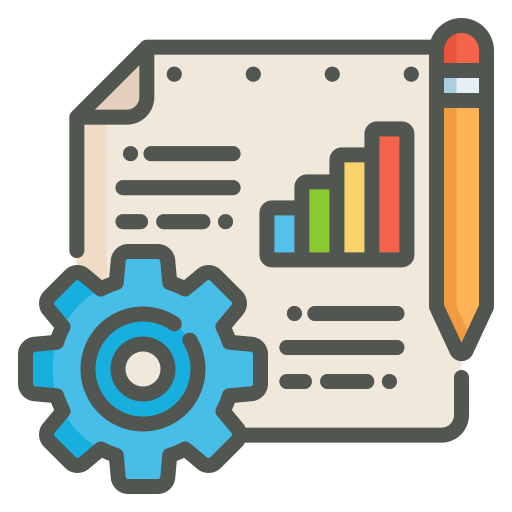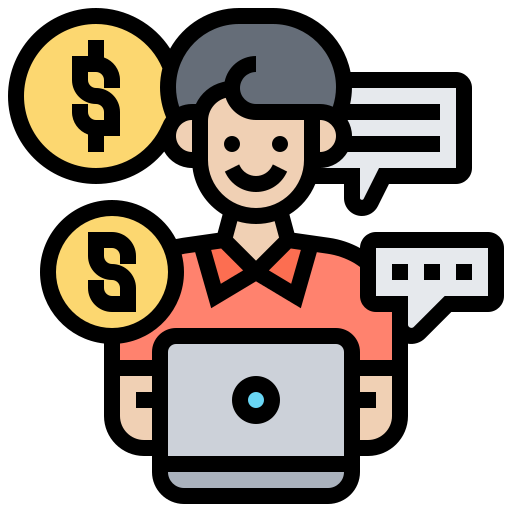Introduction
In the rapidly growing food delivery industry, companies like Uber Eats rely heavily on artificial intelligence (AI) to enhance the efficiency of their services and provide a personalized, seamless experience to customers. AI enables these platforms to address challenges such as predicting food preparation times, optimizing delivery routes, and tailoring recommendations to individual customer preferences. With the rise of on-demand services, optimizing the food delivery process has become increasingly important. AI not only streamlines operations but also improves customer satisfaction by delivering food faster and more accurately.
In this blog, we’ll explore how Uber Eats integrates AI across various aspects of its food delivery process. We will delve into key areas, such as AI in predicting food preparation time, route optimization, personalization of restaurant and food recommendations, and the future potential of AI in this space. By understanding these AI-powered mechanisms, we can better appreciate the technology behind the convenience of ordering food online.

1. AI in Predicting Food Preparation Time
Accurately predicting food preparation time is a critical challenge for food delivery platforms. Delays in preparing food can disrupt delivery schedules and affect customer satisfaction. Uber Eats employs machine learning (ML) models to estimate food preparation times for each order, taking into account various dynamic factors.
Factors Affecting Food Preparation Time
- Order Complexity Complex orders requiring multiple ingredients or longer preparation steps can lead to longer wait times. AI models factor in the order type and complexity to adjust predictions. For instance, a custom pizza with multiple toppings may take longer than a simple salad.
- Historical Data Analysis AI uses historical data from past orders to predict the preparation time of similar orders. This data is aggregated and analyzed over time to create more accurate predictions.
- Real-time Kitchen Workload Uber Eats monitors real-time order volumes at restaurants. If a restaurant is particularly busy or experiencing delays, the AI adjusts estimated preparation times accordingly.
- Staff Availability and Efficiency The number of chefs or kitchen staff available can affect how quickly food is prepared. AI integrates staff availability data into the prediction model to adjust the estimated time accordingly.
- Restaurant Type and Cuisine: Different types of cuisine have different preparation times. For example, a burger from a fast-food restaurant might be ready in under 10 minutes, while a gourmet meal from a fine-dining restaurant could take 30 minutes or longer. The AI system takes this into account when predicting food preparation times.
How AI Predicts Food Preparation Time
Uber Eats uses a variety of data sources to estimate food preparation time accurately:
- Data Collection from Past Orders: AI collects data on previous orders at each restaurant and uses this historical information to predict preparation times for new orders.
- Feature Extraction: Key features such as cuisine type, order complexity, and kitchen workload are extracted from the data to build predictive models.
- Training Machine Learning Models: The AI system trains machine learning models using historical data to predict the expected preparation time for each new order.
- Continuous Updates Based on Real-time Data: As orders are placed, the system continuously updates predictions in real time based on feedback from the restaurant and drivers. Through deep learning techniques, Uber Eats can predict food preparation times with greater accuracy. This helps to prevent delays and ensures timely deliveries.
2. AI in Optimizing Delivery Routes
Once the food is ready, the next challenge is delivering it to the customer as quickly as possible. Uber Eats optimizes delivery routes using AI-powered logistics models to ensure timely delivery and customer satisfaction.
Key Components of Route Optimization
- Real-Time Traffic Prediction AI integrates real-time traffic data from sources such as GPS and third-party traffic systems to find the fastest route for the delivery driver. This allows the system to avoid traffic jams, road closures, or accidents that could delay delivery.
- Historical Route Data Machine learning models analyze past delivery routes to determine the most efficient paths. These models account for common traffic patterns, helping drivers avoid congestion during peak hours.
- Dynamic Reassignment of Drivers If a nearby driver becomes available, the AI system can reassign the delivery to that driver, reducing wait times and ensuring faster deliveries. This system optimizes the overall delivery process by minimizing unnecessary delays.
- Multi-Order Delivery Optimization In cases where a driver is handling multiple orders, the AI system groups these orders together in an optimal way. The goal is to minimize overall delivery time while ensuring that each customer receives their food at the right time and in the best condition.
- Weather and Road Conditions Analysis AI also factors in weather conditions and potential road hazards. For instance, the system may reroute drivers during inclement weather to avoid delays caused by rain, snow, or road accidents.
How Uber Eats AI Improves Route Optimization
Uber Eats’ AI system is designed to dynamically adjust delivery routes based on real-time data. For instance, if a delivery route is delayed due to traffic congestion, the AI will instantly recalculate an alternative path to ensure that the food arrives promptly. The system prioritizes deliveries based on factors like food type (e.g., hot foods versus cold items) to ensure freshness. By continuously processing data from GPS systems, driver availability, and customer locations, Uber Eats ensures that food is delivered as quickly as possible while maintaining optimal quality.
How Uber Eats AI Improves Route Optimization
Uber Eats’ AI system is designed to dynamically adjust delivery routes based on real-time data. For instance, if a delivery route is delayed due to traffic congestion, the AI will instantly recalculate an alternative path to ensure that the food arrives promptly. The system prioritizes deliveries based on factors like food type (e.g., hot foods versus cold items) to ensure freshness. By continuously processing data from GPS systems, driver availability, and customer locations, Uber Eats ensures that food is delivered as quickly as possible while maintaining optimal quality.
AI in Personalized Restaurant and Food Recommendations
Another key way that Uber Eats uses AI is by providing personalized restaurant and food recommendations. Personalized recommendations enhance the customer experience by making it easier for users to find meals that match their preferences.
Factors Influencing Personalized Recommendations
- Real-Time Traffic Prediction AI integrates real-time traffic data from sources such as GPS and third-party traffic systems to find the fastest route for the delivery driver. This allows the system to avoid traffic jams, road closures, or accidents that could delay delivery.
- Historical Route Data Machine learning models analyze past delivery routes to determine the most efficient paths. These models account for common traffic patterns, helping drivers avoid congestion during peak hours.
- Dynamic Reassignment of Drivers If a nearby driver becomes available, the AI system can reassign the delivery to that driver, reducing wait times and ensuring faster deliveries. This system optimizes the overall delivery process by minimizing unnecessary delays.
- Multi-Order Delivery Optimization In cases where a driver is handling multiple orders, the AI system groups these orders together in an optimal way. The goal is to minimize overall delivery time while ensuring that each customer receives their food at the right time and in the best condition.
- Weather and Road Conditions Analysis AI also factors in weather conditions and potential road hazards. For instance, the system may reroute drivers during inclement weather to avoid delays caused by rain, snow, or road accidents.
How Uber Eats AI Improves Route Optimization
Uber Eats’ AI system is designed to dynamically adjust delivery routes based on real-time data. For instance, if a delivery route is delayed due to traffic congestion, the AI will instantly recalculate an alternative path to ensure that the food arrives promptly. The system prioritizes deliveries based on factors like food type (e.g., hot foods versus cold items) to ensure freshness.
By continuously processing data from GPS systems, driver availability, and customer locations, Uber Eats ensures that food is delivered as quickly as possible while maintaining optimal quality.
3. AI Techniques for Personalization
- Collaborative Filtering Collaborative filtering analyzes customer behavior patterns to recommend restaurants or dishes that other similar users have enjoyed. For example, if a user frequently orders pizza, the AI will recommend new pizza restaurants that other pizza lovers have tried.
- Content-Based Filtering This approach uses the characteristics of a dish (such as cuisine type, ingredients, or dietary preferences) to recommend similar options. For instance, if a user frequently orders spicy food, the AI will suggest other spicy dishes they may like.
- Deep Learning Models Deep learning models process large datasets of customer preferences, historical orders, and restaurant data to provide personalized, dynamic suggestions in real-time.
- Contextual Bandit Algorithms Contextual bandits continuously adapt their recommendations based on user engagement. This method allows the AI to fine- tune suggestions and deliver increasingly personalized recommendations over time.
Example Scenario
Imagine a customer who orders sushi every Friday night. Based on this pattern, Uber Eats’ AI may prioritize sushi restaurant recommendations at the end of the week. If a customer regularly orders vegan dishes, the system will prioritize plant-based meal options in future suggestions.
4. Benefits of AI in Uber Eats’ Food Delivery System
The integration of AI into Uber Eats’ operations brings a variety of benefits for customers, restaurants, and delivery drivers alike.
- Faster and More Accurate Deliveries AI-driven logistics ensure that food is delivered quickly and accurately, minimizing delays and ensuring that the food arrives at its best.
- Enhanced User Experience Personalized recommendations make it easier for customers to find meals they enjoy, leading to higher satisfaction and retention.
- Increased Efficiency for Restaurants and Drivers Restaurants benefit from more accurate order flow predictions, while drivers receive optimized routes, leading to higher earnings and reduced wait times.
- Better Resource Allocation AI helps Uber Eats predict demand surges and allocate resources accordingly, ensuring that there are enough drivers during peak hours.
- Improved Customer Retention and Engagement By providing personalized recommendations and ensuring timely deliveries, Uber Eats strengthens its customer base and increases brand loyalty.
AI Techniques for Personalization
- Collaborative Filtering Collaborative filtering analyzes customer behavior patterns to recommend restaurants or dishes that other similar users have enjoyed. For example, if a user frequently orders pizza, the AI will recommend new pizza restaurants that other pizza lovers have tried.
- Content-Based Filtering This approach uses the characteristics of a dish (such as cuisine type, ingredients, or dietary preferences) to recommend similar options. For instance, if a user frequently orders spicy food, the AI will suggest other spicy dishes they may like.
- Deep Learning Models Deep learning models process large datasets of customer preferences, historical orders, and restaurant data to provide personalized, dynamic suggestions in real-time.
- Contextual Bandit Algorithms Contextual bandits continuously adapt their recommendations based on user engagement. This method allows the AI to fine- tune suggestions and deliver increasingly personalized recommendations over time.
Example Scenario
Imagine a customer who orders sushi every Friday night. Based on this pattern, Uber Eats’ AI may prioritize sushi restaurant recommendations at the end of the week. If a customer regularly orders vegan dishes, the system will prioritize plant-based meal options in future suggestions.
5. Future of AI in Food Delivery
As AI technology continues to evolve, Uber Eats is likely to introduce even more advanced capabilities to further optimize its food delivery process. Some potential future developments include:
- Autonomous Delivery Vehicles & Drones AI-powered drones and autonomous vehicles could further revolutionize food delivery by reducing reliance on human drivers and increasing delivery speed.
- Voice and Chatbot Ordering With AI assistants and chatbots, customers could place food orders through voice commands, simplifying the ordering process and improving convenience.
- Augmented Reality (AR) Menus AI could power AR menus, allowing users to visualize food items before placing an order, enhancing the customer experience.
- Advanced Predictive Analytics AI could use advanced predictive analytics to forecast demand fluctuations more accurately, allowing Uber Eats to adapt its service offerings to meet real-time demand.
Conclusion
Uber Eats has successfully integrated AI into its operations, transforming the food delivery process by improving efficiency, optimizing delivery times, and personalizing the user experience. By leveraging machine learning models to predict food preparation times, optimize delivery routes, and offer personalized restaurant and food recommendations, Uber Eats continues to innovate and stay at the forefront of the food delivery industry. As AI technology advances, we can expect even more innovations, such as autonomous delivery vehicles, AI-driven chatbots, and AR menus, to further enhance the food delivery experience. Uber Eats is poised to lead the way in shaping the future of AI-powered food delivery, bringing greater convenience and satisfaction to its users.











